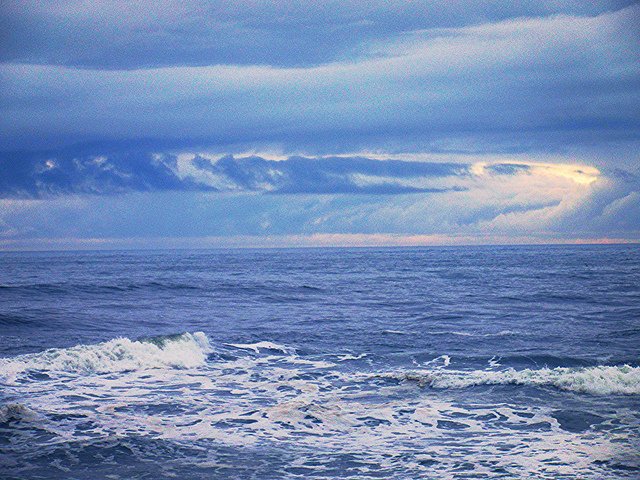
Off the coast of Southern California, the signs are evident. Warmer water temperature across the Pacific Ocean is having profound impacts on marine life.
For the second year in a row, the seawater off the California coast has been 5-10 degrees warmer during the winter, rarely dropping below 60 degrees. It’s been great for surfers and anglers, but not so much for the sea lions and other creatures that rely on a delicate balance of nature.
So what’s causing these changes? By surveying the entire Pacific Ocean, scientists for the National Oceanic and Atmospheric Association identified a giant area of warm water spanning the Gulf of Alaska and recently emerging off California they are calling “the blob.” And yes, that is the technical term.
Not since records began has the North Pacific Ocean been so warm for so long, which means scientists are not exactly sure what to expect. One theory is that we are experiencing an El Nino period to be followed by a cooling off La Nina cycle. Another is that a low pressure trough weakened the winds that drive cooler water north. Or maybe it’s the overall effects of climate change and it might not ever be reversed.
“Right now it’s super warm all the way across the Pacific to Japan,” said NOAA oceanographer Bill Peterson in an article on the agency’s website. “For a scientist it’s a very interesting time because when you see something like this that’s totally new you have opportunities to learn things you were never expecting.”
Peterson, who studies salmon, warns the warmer sea temps could mean a poor return for salmon and steelhead to the Pacific Northwest. But they just may have been able to ride a cold current that seems to have avoided the warm stream. In addition, here are six more signs the ocean is getting warmer:
Sharks!
More often than anytime in recent history, sharks are showing up off the California coast in greater numbers. In what’s become a regular occurrence at El Porto in Manhattan Beach, surfers and paddle boarders are accustomed to seeing juvenile great whites feeding off sting rays. Last year for the first time ever in Santa Monica Bay, a swimmer was bitten by a shark. The juvenile great white had been hooked by a fisherman at the end of the Manhattan Beach pier. Charter captains too have been spotting more sharks, with blues and threshers showing up on the line, species normally reserved for climates further south.
Anglers rejoice
For anglers, the sea change is a welcomed surprise with blue fin tuna and yellowtail sticking around through the winter months. Normally Bluefin tuna flees the California coast in the winter for the warmer waters of Hawaii and the South Pacific. But it appears this year that the sport fishing catch just stuck around. Same goes for yellowtail, which normally might make an appearance by August, but had already showed up this year in June.
Whales galore
Species of whales uncommon to Southern California are showing up at unexpected times. Whales sights out of Dana Point, Long Beach and Redondo Beach this year were better than at anytime in the past 30 years. Additional species, that haven’t been seen in decades, such as pilot whales, have returned. There have also been reports of Bryde’s whales, normally found in Mexico, off Dana Point. The whales have no doubt followed the krill that’s been able to flourish in the warmer water.
Sea lion die-off
For the sea lions, this spring brought a heart-breaking wave of dying young pups to the harbors and beaches of Southern California. Experts believe warmer water temperatures forced the sea lions’ food source further out to sea and deeper so the mothers had trouble finding food. When they took longer to return to their Channel Islands breeding ground, the pups left and were not weaned long enough. The result has been one of the worst years ever for dead and dying sea lions that any rescue organization can remember.
Mysterious creatures
 More varied critters are showing up that nobody has seen before. Last year a wave of small jellylike creatures washed up on the beaches throughout Southern California. Known as velella velella or by-the-wind sailors, they are usually found off the coast of Baja. Their unexpected appearance captivated beach-goers last year when they washed up in mass. The oarfish too has shown up where it’s least expected. A 13-foot oarfish recently washed up on a beach at the western end of Catalina Island. Normally found at 3,000 feet, it was unclear how it ended up near the beach. Lastly, the ocean sunfish or mola mola, has also become more common. The disk-like fish hovers about a foot below the surface and can catapult itself out of the water when in distress.
More varied critters are showing up that nobody has seen before. Last year a wave of small jellylike creatures washed up on the beaches throughout Southern California. Known as velella velella or by-the-wind sailors, they are usually found off the coast of Baja. Their unexpected appearance captivated beach-goers last year when they washed up in mass. The oarfish too has shown up where it’s least expected. A 13-foot oarfish recently washed up on a beach at the western end of Catalina Island. Normally found at 3,000 feet, it was unclear how it ended up near the beach. Lastly, the ocean sunfish or mola mola, has also become more common. The disk-like fish hovers about a foot below the surface and can catapult itself out of the water when in distress.
Photo credit: Flickr Creative Commons.









